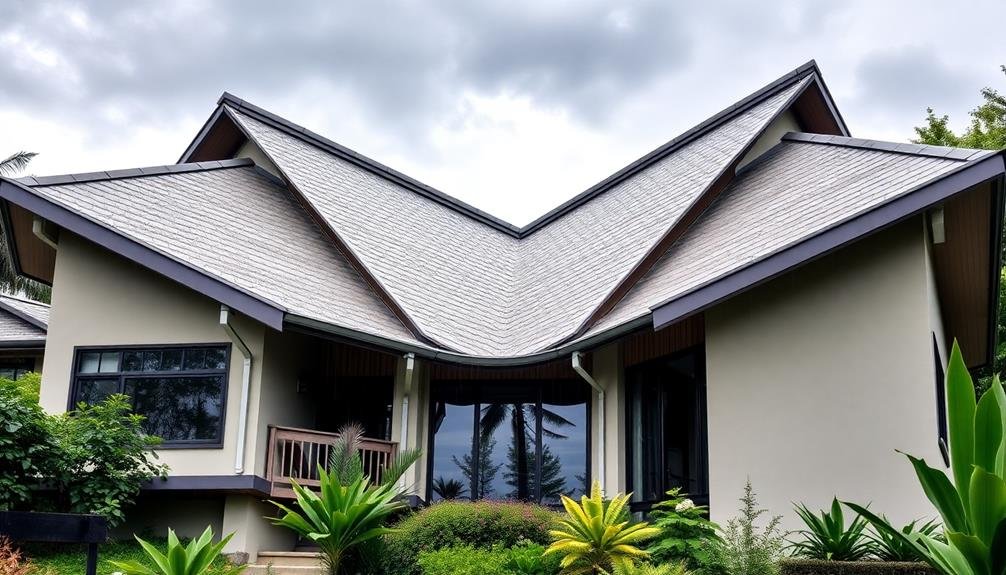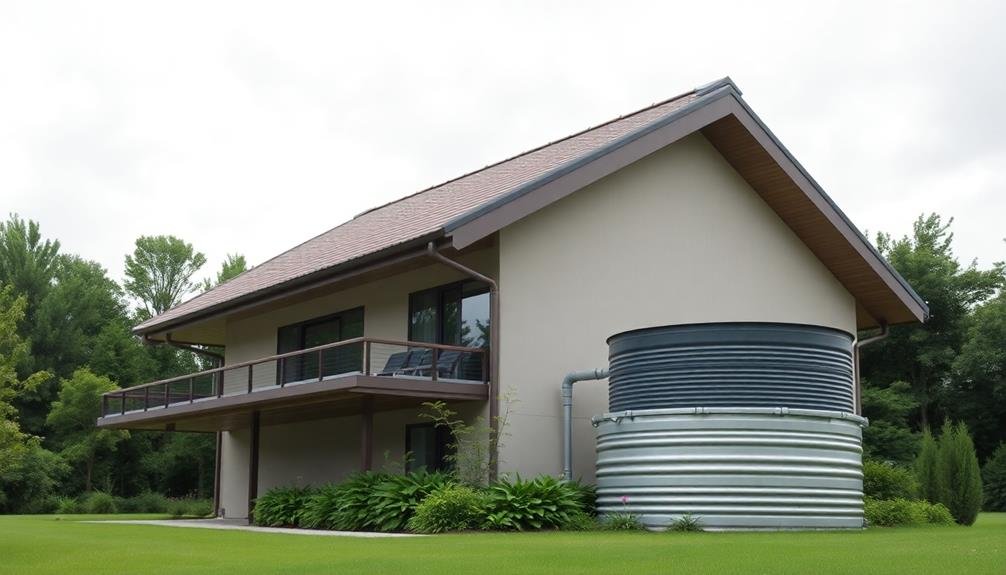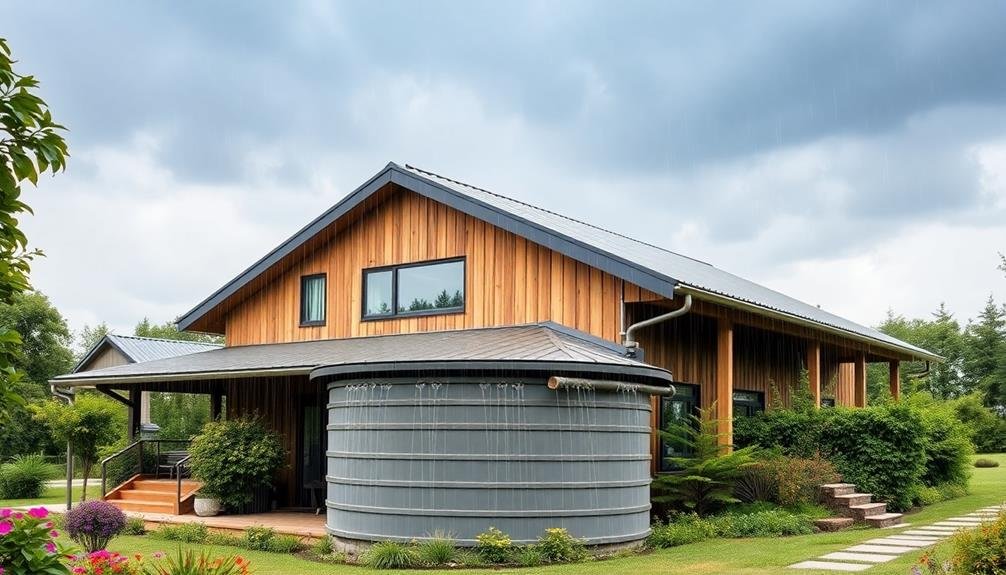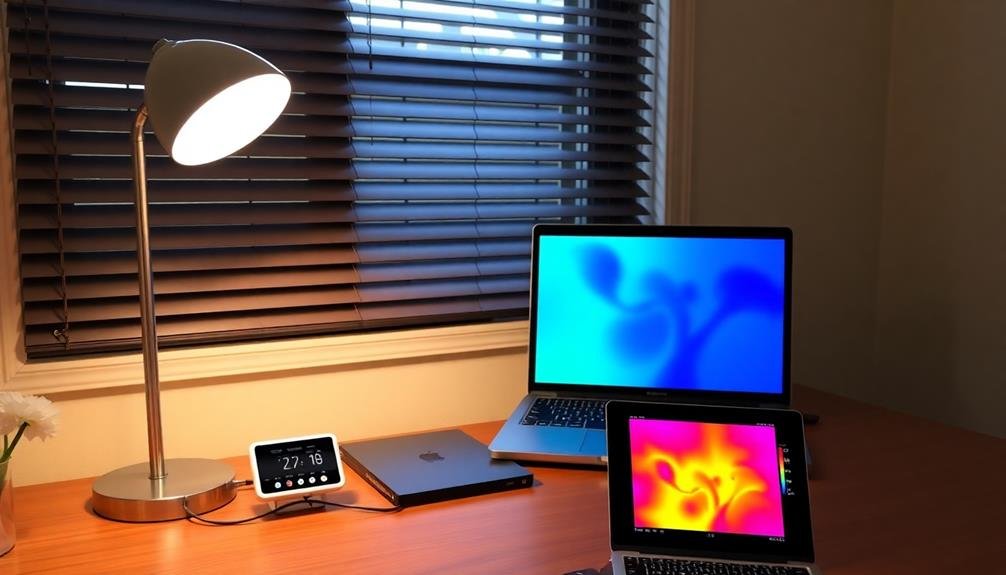Looking to maximize your rainwater collection? Three roof designs stand out for their efficiency. The butterfly roof's V-shape creates a central valley, funneling water to a single collection point. A gabled roof with well-designed gutters offers versatility and effective water capture. For simplicity, consider a sloped single-pitch roof, which directs water to one edge for easy collection. Each design has its strengths: the butterfly roof eliminates complex gutters, gabled roofs offer material flexibility, and single-pitch roofs are cost-effective. Your choice depends on factors like climate, structure size, and intended water usage. Explore these options to find the perfect fit for your sustainable water harvesting goals.
Butterfly Roof Design

Picture a graceful butterfly perched on your roofline. That's the essence of a butterfly roof design, an innovative approach to rainwater collection. This V-shaped roof slopes inward, creating a central valley where rainwater naturally flows.
You'll find that butterfly roofs are highly efficient for harvesting rainwater. The inverted slope directs water to a central collection point, making it easy to channel into storage tanks or cisterns. This design eliminates the need for complex gutter systems, reducing maintenance and potential failure points.
Another advantage is the roof's ability to maximize natural light. The raised outer edges allow for larger windows, brightening your interior spaces. You'll also benefit from improved energy efficiency, as the design can accommodate larger solar panels.
However, you should consider potential drawbacks. The central valley requires careful waterproofing to prevent leaks. In areas with heavy snowfall, you might need additional structural support. Installation costs can be higher than traditional roofs due to the unique design.
Despite these challenges, a butterfly roof offers a striking aesthetic and superior rainwater collection capabilities, making it an excellent choice for eco-conscious homeowners.
Gabled Roof With Gutters
While butterfly roofs offer a unique approach, the classic gabled roof with gutters remains a popular and effective choice for rainwater collection. You'll find this design on many homes, characterized by its triangular shape with two sloping sides meeting at a central ridge. The sloped surfaces naturally direct water toward the edges, where gutters can easily capture it.
To maximize your rainwater harvesting potential, guarantee your gutters are properly sized and installed. They should be slightly angled to encourage water flow toward downspouts. You'll want to keep them clean and free of debris to prevent clogs and overflow. Consider installing gutter guards to reduce maintenance and improve efficiency.
The gabled roof's versatility allows for various materials, including asphalt shingles, metal, or tiles. Each option has its pros and cons for rainwater collection. Metal roofs, for instance, are smooth and durable, facilitating cleaner runoff.
When designing your gabled roof for rainwater collection, factor in your local climate, annual rainfall, and intended water usage. You can enhance collection by increasing the roof's pitch or expanding its surface area.
Sloped Single-Pitch Roof

For those seeking simplicity and efficiency, a sloped single-pitch roof offers an excellent option for rainwater collection. This design features a single angled surface that slopes in one direction, allowing water to flow naturally towards a collection point.
You'll find it's particularly effective in areas with moderate rainfall, as it efficiently channels water without the complexity of multiple slopes.
When installing a sloped single-pitch roof, you'll want to make sure a pitch of at least 1/4 inch per foot to promote proper drainage. The steeper the pitch, the faster water will flow, reducing the risk of pooling or leaks.
You can direct the collected rainwater to a single gutter system along the lower edge of the roof, simplifying the collection process.
This roof design is also cost-effective, as it requires fewer materials and less labor to install compared to more complex roof structures. It's ideal for smaller buildings, sheds, or additions to existing structures.
Remember to take into account local building codes and climate conditions when opting for this design, as it may not be suitable for areas with heavy snow loads.
Frequently Asked Questions
How Much Rainwater Can Be Collected From an Average-Sized Roof Annually?
You can collect a significant amount of rainwater from an average-sized roof annually. It's typically around 600 gallons per 1,000 square feet of roof area for every inch of rainfall. Your location's precipitation will determine the total.
What Materials Are Best for Roofing When Prioritizing Rainwater Collection?
You'll want to choose non-toxic, smooth materials for ideal rainwater collection. Metal roofs, particularly steel or aluminum, are your best bet. They're durable, efficient, and won't contaminate the water. Avoid asphalt shingles or wooden roofs.
Are There Any Health Concerns Associated With Drinking Collected Rainwater?
You should be aware of potential health risks when drinking collected rainwater. It can contain contaminants like bacteria, parasites, and chemicals. You'll need to properly filter and treat the water before consuming it to guarantee it's safe.
How Can I Integrate Rainwater Collection Systems With Existing Roof Designs?
You can integrate rainwater collection systems with your existing roof by installing gutters and downspouts that lead to storage tanks. Add filters to remove debris, and consider a first-flush diverter to improve water quality. It's a simple retrofit!
What Maintenance Is Required for Rainwater Collection Systems on Roofs?
You'll need to regularly clean gutters, inspect downspouts, and check for leaks. Keep filters clear, sanitize storage tanks annually, and test water quality. Don't forget to maintain pumps and pipes. Trim overhanging branches to reduce debris.
In Summary
You've now explored three excellent roof designs for efficient rainwater collection. Whether you opt for the dramatic butterfly roof, the classic gabled roof with gutters, or the simple sloped single-pitch roof, you're on your way to maximizing your water harvesting potential. Remember, the best choice depends on your specific needs, climate, and budget. Don't hesitate to consult with a professional to determine which design will work best for your home and rainwater collection goals.





Leave a Reply